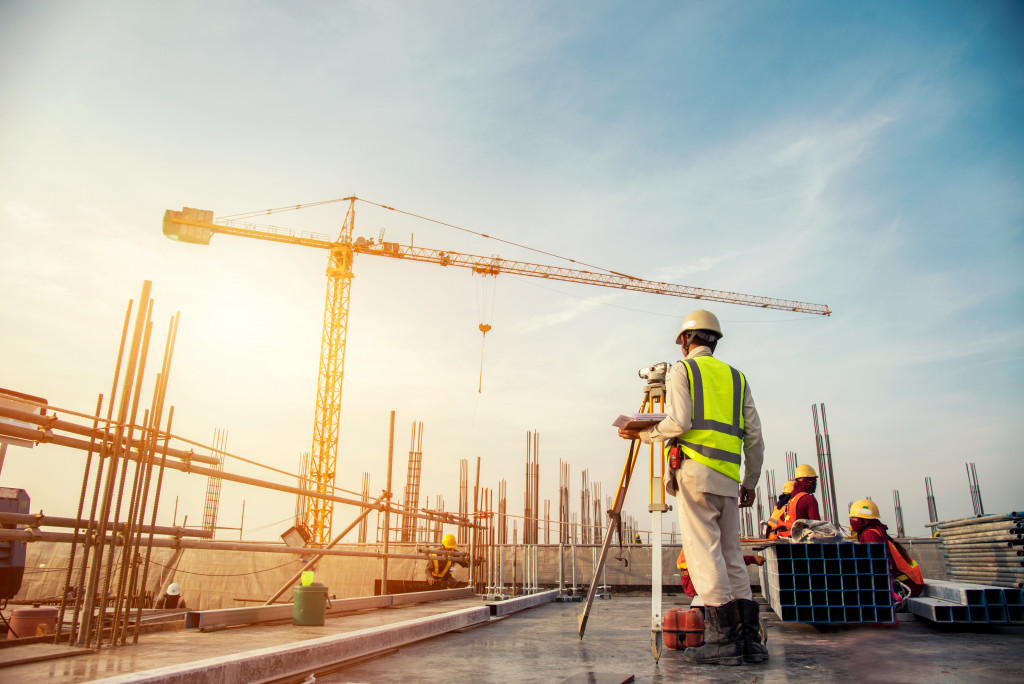- Regular safety training can educate workers on potential hazards and best practices to avoid them, fostering a safety-conscious culture.
- Job Hazard Analysis (JHA) is a systematic method to identify and mitigate potential hazards in the workplace, enhancing overall safety.
- Maintaining equipment through regular inspections and repairs is crucial to prevent accidents caused by equipment failure.
- Designating safety officers and establishing a reliable reporting system encourages open communication about safety and promotes a proactive approach to accident prevention.
As a construction business owner, ensuring the safety of your staff is a crucial responsibility. Falls are one of the most common accidents on construction sites and can lead to severe injuries or even fatalities. However, you can significantly reduce the risk of such mishaps by adopting strategic safety measures. Delve into the strategies that can help mitigate fall accidents in your construction business.
Creating Safety Protocols
Establishing rigorous safety protocols is the first and most essential step toward minimizing the risk of fall accidents on your construction sites. Here are some tips:
Implementing OSHA-Accredited Fall Protection Systems
The Occupational Safety and Health Administration (OSHA) recommends various fall protection systems, such as guardrails, safety net systems, and personal fall arrest systems. These OSHA-accredited fall protection systems, engineered to provide maximum safety, can significantly reduce the potential for falls.
Guardrails are effective in preventing accidental slips and falls from edges. Safety net systems, installed below a work area, can catch falling workers, thus preventing direct impact with the ground. Personal fall arrest systems, which include a body harness, an anchorage, and a connector, are designed to stop a fall midway.
It’s crucial to ensure that these systems are implemented correctly and maintained regularly to ensure their efficacy. Besides, workers should be trained on properly using these systems, and regular inspections should be carried out to ensure their functionality and safety compliance.
Regular Safety Training

Regular safety training forms a crucial component of fall prevention strategies. Through effective and ongoing training, workers can be educated about the inherent risks in their work environment and the best practices to avoid them. They should be trained to use safety equipment properly, recognize potential hazards, and respond effectively in emergencies.
Special attention should be given to high-risk areas and activities, with demonstrations on proper techniques and use of equipment. This ensures their safety and fosters a safety-conscious culture within the organization.
It’s crucial to keep these trainings engaging and incorporate real-life examples, interactive sessions, and practical simulations to ensure the information is well understood and retained. Remember, a well-trained worker is a safe worker. Regularly updating the training curriculum and retraining employees can further enhance their safety skills and awareness.
Job Hazard Analysis
Job Hazard Analysis (JHA) is a systematic approach to identifying potential hazards and implementing preventive measures in the workplace. A successful JHA involves:
- Breaking down job tasks into sub-tasks.
- Identifying potential hazards in each.
- Devising and implementing safety strategies to mitigate these hazards.
This could involve analyzing tasks such as working at heights, operating heavy machinery, or handling hazardous materials in construction. The JHA should be carried out by a competent person and involve the input of the workers performing the tasks.
The findings of the JHA should be communicated to all relevant parties and used to inform training, equipment use, and safety protocols. Regular revision of the JHA is crucial, particularly after an accident or near-miss incident, or when there are changes to operations, equipment, or personnel. A thorough and regularly updated JHA can significantly minimize the risk of falls and other accidents in a construction setting.
Maintaining Equipment

Proper equipment maintenance is a pivotal prevention strategy in reducing fall accidents on construction sites. Construction tools and equipment, particularly those used for height-related tasks, should undergo routine inspections and maintenance to ensure their functionality and safety.
This includes but is not limited to, ladders, scaffolds, lifts, and personal fall arrest systems. Any equipment found to be damaged or defective should be immediately repaired or replaced. Furthermore, workers should be trained to check their equipment before each use and report any signs of wear or damage.
Effective equipment maintenance not only prevents accidents caused by equipment failure but also extends the lifespan of the tools, making it a sound investment in both safety and cost-effectiveness.
Designated Safety Officers
Designating safety officers serves as a cornerstone in a comprehensive safety strategy. These individuals ensure safety protocols are adhered to on the construction site. They conduct site inspections, identify potential hazards, and enforce safety regulations.
Furthermore, a safety officer also takes the lead in providing safety training, ensuring that each worker is well-versed in the safety requirements of their tasks. They serve as the point of contact for any safety concerns or questions, creating an open dialogue about safety between management and staff.
Regular meetings led by safety officers can keep safety in mind and promote a safety culture within the organization. This role is crucial as a proactive measure for preventing accidents and maintaining a secure working environment.
Reporting System
A robust and reliable reporting system is crucial to any comprehensive safety strategy. This system should enable workers to report unsafe conditions, incidents, or near-misses without fear of retribution. Reports should be investigated promptly and thoroughly, with findings used to inform enhancements to safety protocols.
This system helps identify and address potential hazards before they cause harm and fosters open communication about safety at all levels of the organization. By encouraging reports and responding to them appropriately, you build a culture of safety where everyone feels responsible for maintaining a safe workplace.
Regular feedback on reported issues can also reinforce the value of the reporting system, increasing its effectiveness. An effective reporting system is a powerful tool for proactive accident prevention in a construction setting.
Implementing these strategies can help create a safer working environment in your construction business. Don’t forget that safety is a continuous effort. Always be proactive, conduct regular reviews, and adjust safety protocols. Be sure to have a safe workplace for everyone, because your team’s safety is your success.




